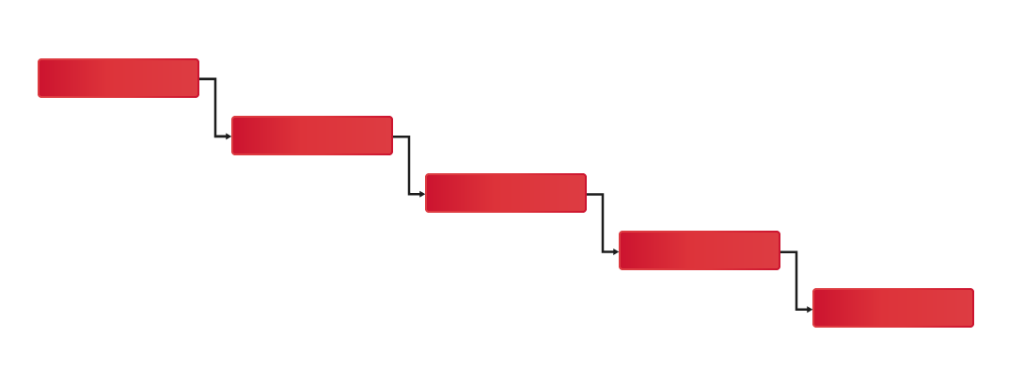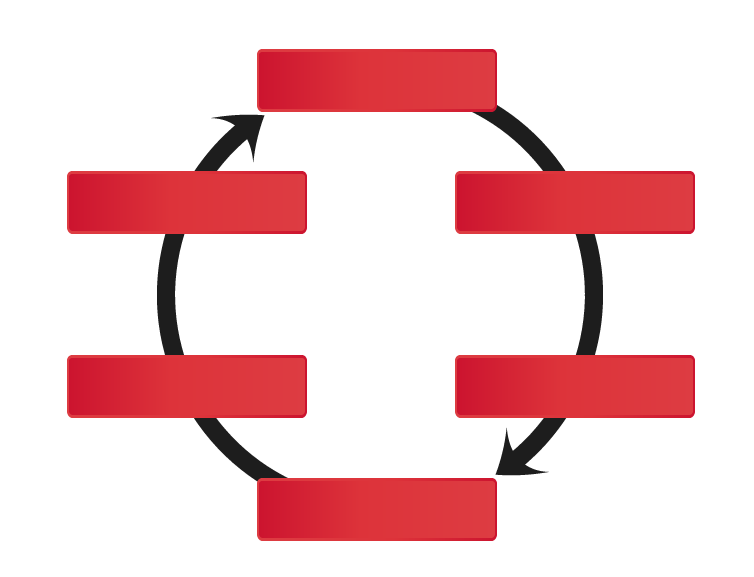What is Waterfall
The Waterfall model is a project management guide that describes the development process of a project, divided into individual phases. Each phase of the project is dealt with as a separate step and the subsequent step is implemented once the previous one is completed. This means that the project progresses linearly from the first phase (e.g. analysis) to the last phase (e.g. operation).
Typical phases of the Waterfall model include analysis, design, development, testing, piloting and operation. This model is suitable for projects where the scope of the project is well-defined (from client requirements to developer analysis to the final idea) and the key element of the project is delivery within a given time and cost. Examples include real estate development projects, conference planning.
The waterfall model attempts to anticipate all aspects of the project in advance and define them so that they are strictly separated and then adhered to. If any changes are made, they can be costly and time consuming to implement because each phase of the project builds on the previous phase and changes can cause shifts in the overall project.
Benefits of using the Waterfall method
- Accurate timelines and budgets, with a clear idea at the beginning of what, who and when is needed for completion
- Clearly defined project phases, making it easier to manage the project and allocate resources
- Allows responsibilities to be clearly defined
- Is followed by clear documentation
Disadvantages of using the Waterfall method
- Not flexible enough, the whole schedule has to change as the process changes
- Planning and documentation can take a lot of resources
- Does not provide enough feedback from the customer
What is Agile
Agile is an approach to project management that emphasizes flexibility and adaptability in the development of products or services. Unlike traditional methods, such as Waterfall, which focus on a fixed plan, the agile approach relies on iterative cycles, called sprints, during which a working prototype of the product is gradually created and tested.
The team has more freedom and responsibility, and the customer can actively participate and influence the shape of the product during development thanks to the continuous delivery approach. This approach enforces frequent and regular delivery of functional software and allows the customer to see the results of the team’s work during development.
The agile method is most commonly used in software development, but can also be applied to other areas such as publishing or marketing. The agile approach is suitable for projects where you need to react quickly to change and where flexibility and adaptability are important. Scrum, as one of the most well-known agile development methodologies, defines clear roles, processes and artifacts to manage and coordinate the team during product development.
Benefits of using the Agile method
- More feedback from the customer, the customer is involved in the production process – they are more satisfied with the result
- Allows for flexible responses to changes in customer requirements and needs
- Forces team members to work together, making it easier to find errors and delays
Disadvantages of using the Agile method
- The whole process can fail due to lack of communication between teams
- It can be difficult to manage large units through it
- Customer needs to be involved in the process with their feedback
- Has an unclear goal, due to the great flexibility, the goal is not the same at the beginning and end of the process
Which one to use?
Maybe both.
Choosing the right approach for your business depends on many factors such as the type of project, size of the team, customer requirements, available resources and more. Often there may be a situation where it is appropriate to choose both methods and combine their pros and cons, we call this a hybrid approach. You don’t have to use only one approach throughout the life of the business, the important thing is to evaluate the specific project and clarify the requirements and needs and then choose the best approach.




